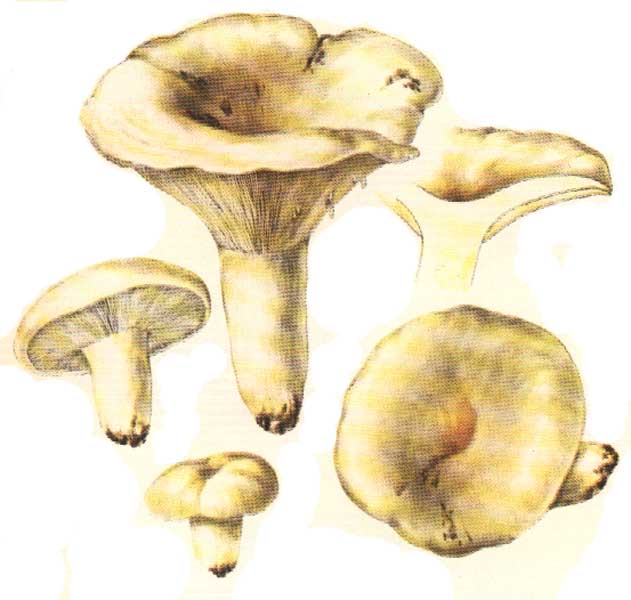
LACTARIUS PIPERATUS
Cap convex, then depressed and also funnel shaped, 6-20 cm; smooth, regular; sometimes slightly cracked in dry air; margin rolled toward the gills, then explanate and undulate; white, then whitish, with hazel stains; always white along the margin. Stem squat, sometimes shaped as an inverted cone; white with reddish or greenish shades. Flesh hard, cream colored, becoming slowly greenish when exposed to air. Odor soft. Flavor slightly acrid. Latex abundant, syrupy, white then slowly greenish; very acrid flavor. Gills very close, thin, narrow; the bifid ones numerous; decurrent along the stem; white with ochraceous hues; then pale cream, stained green by the latex; spotted with brown where bruised. Spores white. It grows in shady and humid recesses in the woods; in large groups, in rows or in circles. Not advisable: in some regions it is eaten cooked on the grill; in others after it has been exsiccated; still in other regions, dried and reduced to powder, as seasoning; in others in small doses, fresh, in place of hot pepper; even cooked after parboiling it is left with a questionable taste of laundry soap and is difficult to digest. More common than the above and similar to it is Lactarius pergamenus, not edible: gills very close and narrow, stem long, cap not too fleshy, white, then yellowish and rugose, flesh that tends to become yellowish, and latex white not changing even in contact with air. All the lactarii that are neither acrid nor bitter are edible, since they are not poisonous; but they are not always tasty.